Our country reports
Since its inception, the Women’s Participation Project has been implemented in 12 countries and even more locations.
Some of these have completed the roll-out of the Women’s Participation Project and others are in various stages of implementation, ranging from initial steps to a multi-year roll-out of the Project.
This page provides you with baseline and end line reports on all project locations where the project has already generated findings.
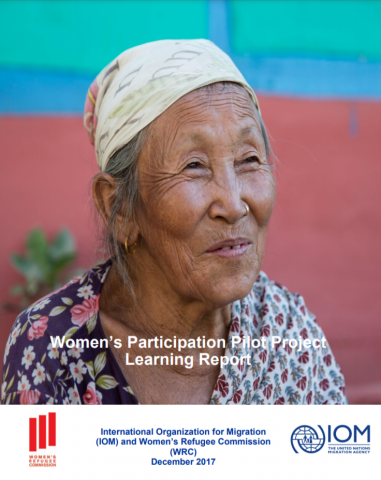
WOMEN’S PARTICIPATION LEARNING REPORT – BASELINE
As part of a global-level project aiming at reducing gender-based violence (GBV) risks in camps and camp-like settings, the International Organization for Migration (IOM) and the Camp Coordination and Camp Management (CCCM) Global Cluster sought to understand how women’s participation in governance structures could contribute to reducing risks of GBV.
Learning Report Baseline.pdf
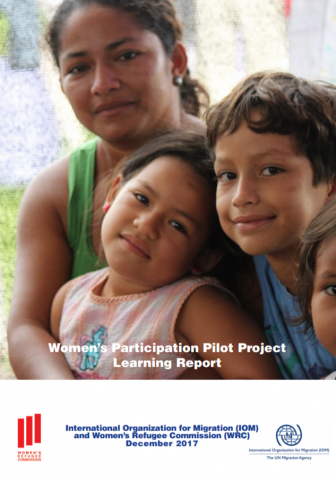
WOMEN’S PARTICIPATION LEARNING REPORT – ENDLINE
Learning Report Endline.pdf

The Women’s Participation Project (WPP) was jointly developed by WRC and IOM, in coordination with the Global Camp Coordination and Camp Management (CCCM) Cluster. This initiative was part of the global initiative Safe from the Start aiming at reducing GBV in camps and camp-like settings, and it is funded by the Bureau of Population, Refugees and Migration (PRM) of the US State Department. The objective of the WPP is to enable CCCM practitioners to gain a broader understanding of what participation is and to develop contextually appropriate strategies to enhance the participation of women and girls in displacement settings.
The WPP started in Somalia in 2019, in the Internally Displaced Persons (IDPs) sites of Kabasa and Qansaxley, in Doolow (Gedo region). Since its launch in 2019, the WPP has helped to increase women's participation in the daily life of the sites and in the sites’ governance structures. Key achievements of the last phase of the project include the completion of vocational training in handicrafts by 615 women, the organisation of three community events by women's groups, the
establishment of a community-led protection committee, and dialogue sessions between men and women to raise awareness of GBV and the risks and challenges faced by women and girls in the sites.
Building on the success of the project activities in Doolow, IOM sought to expand the WPP to new regions in Somalia, including IDP sites in Kismayo (Lower Juba region). In September 2022, as a first step in the roll-out of the WPP in Kismayo, IOM CCCM team conducted a baseline assessment in three IDP sites in Kismayo to assess current levels and prospects related to participation and safety, as well as to identify barriers and opportunities to increase the participation of women and girls in decision-making. This report presents the main findings from the baseline assessment.
In 2023 a comprehensive review of the WPP was conducted to compile main findings from the last seven years of implementation to identify challenges, best practices and recommendations within the project.
In brief, the report found that efforts to involve women in camp leadership positions were successful; targeting certain male gatekeepers to be ‘champions of change’ to other men and boys was an effective model; economic empowerment of women did enhance women's social capital and their ability to participate in their communities; but that financial and human resource constraints were recurrent challenges for WPP teams. The findings will play a role in guiding the WPP strategy going forward.
This document explores the impact of the intervention during the sixth phase of the project, which took place in the year 2020 and 2021 and focused on training women in leadership, and communication skills and equipping them with income-generating skills.
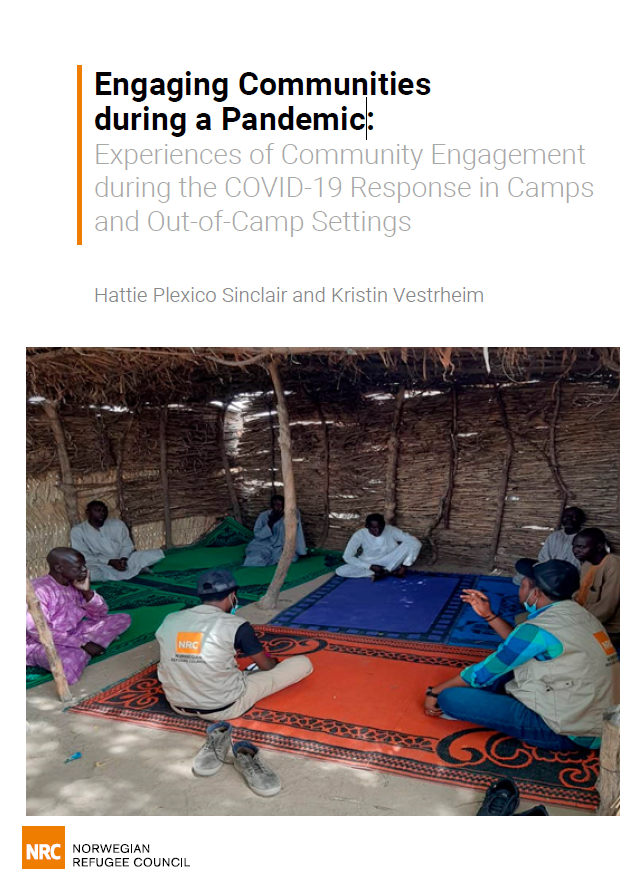
This desk review by NRC aims to identify best practices of and lessons learnt from community engagement efforts in humanitarian responses in camps and out-of-camp settings during COVID-19, for CCCM practitioners and humanitarian agencies. Following ALNAP’s participation framework, the research team interviewed 20 key informant and conducted an in-depth desk review of current literature on community engagement in the COVID19 response.
These two sets of resources (video and presentation) are designed to disseminate the main findings and recommendations from the research on Women’s Participation: The Role of Older Women, conducted in 2019 by the Norwegian Refugee Council (NRC), with support from the International Organisation for Migration (IOM). The first set is addressed to the community and research informants, while the second set is addressed to CCCM practitioners and humanitarian workers.
The research included field work in four locations (Afghanistan, Iraq, Kenya and Tanzania) and covered a range of displacement settings and different types of Camp Management interventions. The full report and the summary report of this research can be found in the ‘Reports’ section of this platform. I you wish to have the presentation in pwpt. format or if you have any question, please contact: womenindisplacement@iom.int, anna.hirschholland@gmail.com and giovanna.federici@nrc.no.
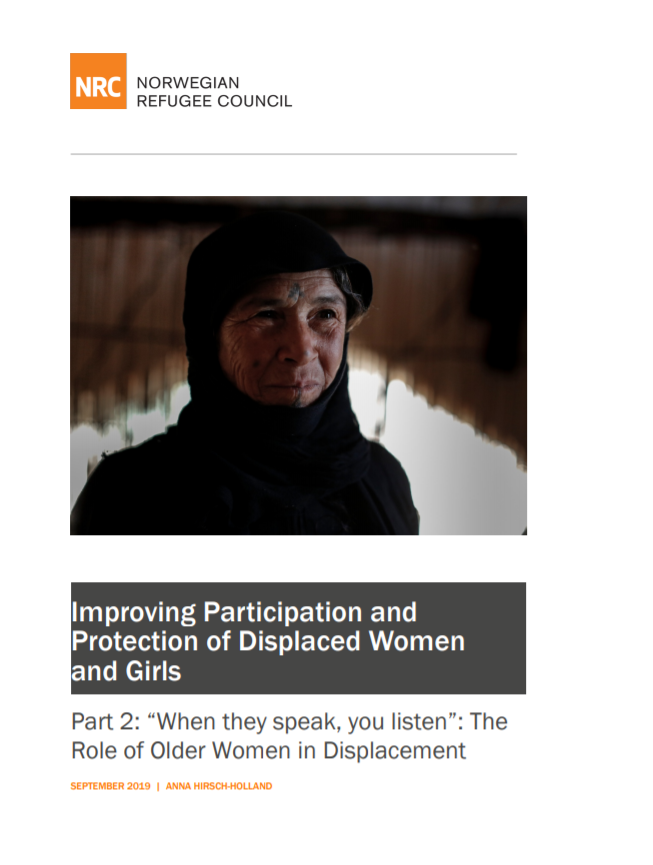
Older women’s role in their families and communities during displacement can have a significant influence on the safety of women and girls. Camp Management agencies should engage with older women in order to harness and capitalise on their role.
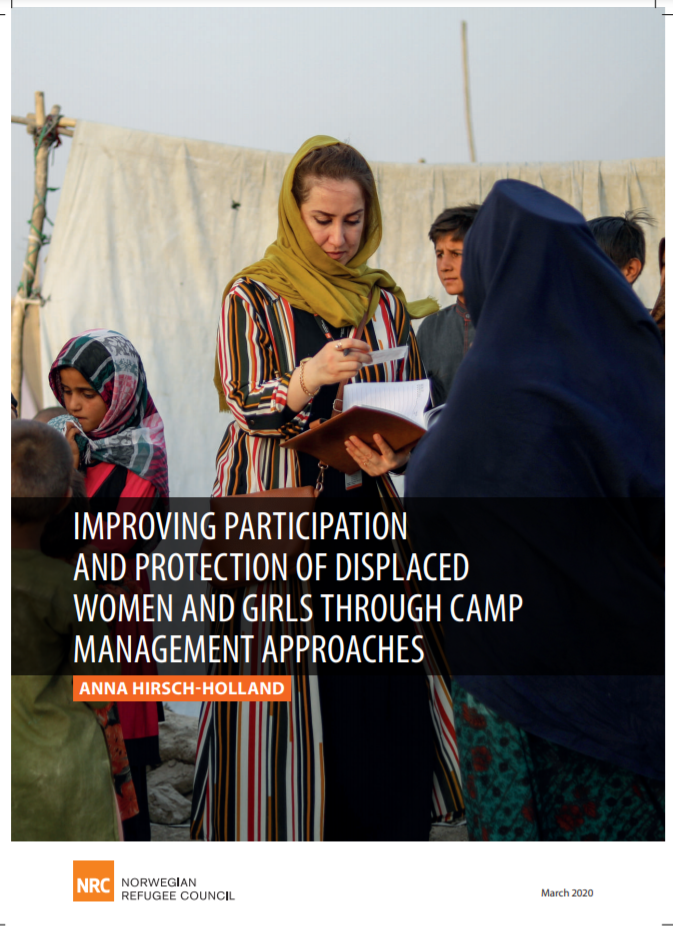
This report investigates the structural barriers to meaningful participation that women face, through a global qualitative study conducted by NRC, with the support of IOM, in Iraq, Afghanistan, Kenya and Tanzania. The findings present practical recommendations for Camp Management agencies to improve the contributions that displaced women and marginalised groups can make to their communities through their inclusion in the coordination of humanitarian responses in camps, informal sites, and urban out of camp neighbourhoods.
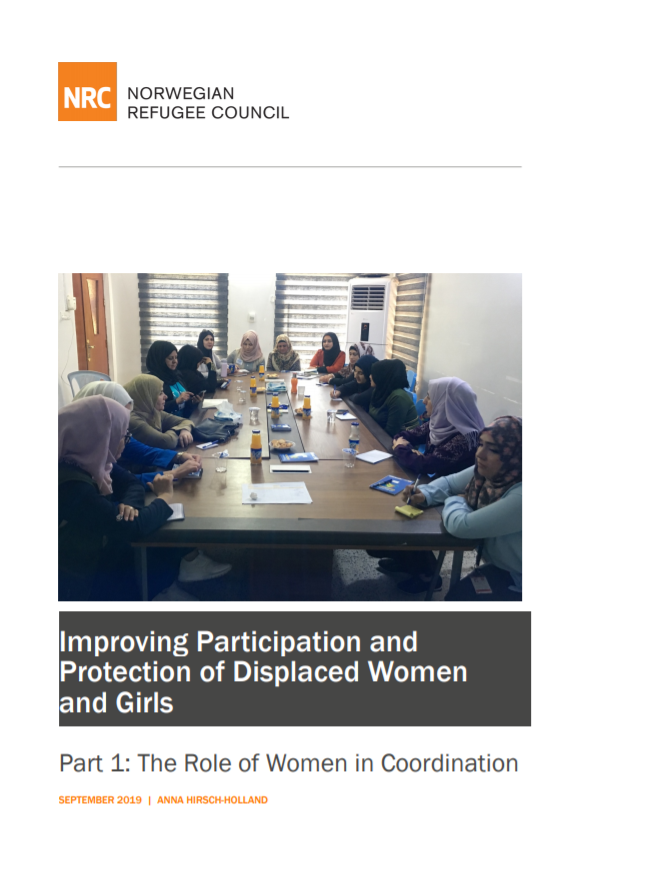
NRC has conducted a global qualitative study, which presents practical recommendations for Camp Management agencies to improve the contribution that displaced women can make to the coordination of humanitarian responses in camps, informal sites, and urban out of camp neighbourhoods. The research was conducted as part of a broader project managed by the International Organization for Migration, as the global co-lead of the Camp Coordination and Camp Management (CCCM) Cluster.

NRC has conducted a global qualitative study, which presents practical recommendations for Camp Management agencies to improve the contribution that displaced women can make to the coordination of humanitarian responses in camps, informal sites, and urban out of camp neighbourhoods. The research was conducted as part of a broader project managed by the International Organization for Migration, as the global co-lead of the Camp Coordination and Camp Management (CCCM) Cluster.
This report outlines findings from an endline study conducted in September 2017, to explore what change, if any, had occurred in how women and girls participate in the camp life and camp governance and how they relate to their perceptions of safety, as a result of these pilot strategies.
At the time of the endline study, Bentiu PoC site hosted 115,020 IDPs (20,067 households), of whom females made up 50 percent and children under 5 made up 38 percent of the total population.

